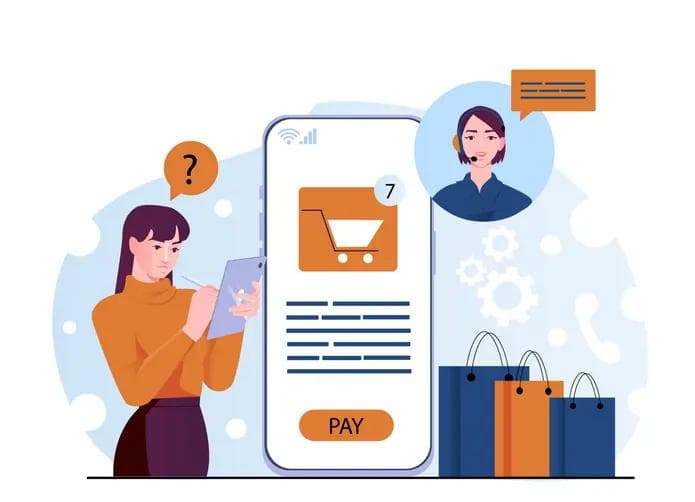Leading industry players struggle as digital disruptors seize control of consumer markets
Leading industry players struggle as digital disruptors seize control of consumer markets
Published by Jessica Weisman-Pitts
Posted on August 29, 2022

Published by Jessica Weisman-Pitts
Posted on August 29, 2022

By Kevin O’Connell, Chief Product Officer at Trust Payments
The past two years upended the retail industry, forcing the closure of physical stores and a surge in demand for e-commerce products and services.
Due to this abrupt shift, many businesses were scrambling in search of alternative payment channels, which led to merchants incorporating digital payment systems to serve customers better. As a result, leading industry players with legacy-driven systems and emerging brands just starting out had to compete with digital disruptors who prioritise current technology to be consumers’ first choice.
Simple checkouts
In today’s competitive landscape, customer expectations have never been higher. The experience a business provides can immediately make or break the relationship it has with a customer.
Put simply: Companies that successfully adopt a customer experience plan obtain higher levels of customer satisfaction, lower levels of customer churn, and improved revenues.
Convenience and safety are additional factors that contribute to a better customer experience. While consumers want to be free of the security risks connected with cash payments and quick checkout processes, they also expect the process to be secure.
SMEs are incorporating new technologies into their checkout areas, such as digital wallets, contactless payments and other innovative payment channels like buy now pay later (BNPL) services, crypto checkouts and more.
Recognising the right payment option
Research from finder.com reveals that online purchases using BNPL services have grown by 39% per year as of 2021. This digital payment method is arguably one of the UK’s fastest-growing channels, with a growth rate that is double of bank transfers and more than triple of digital wallets. In addition, BNPL services like Klarna increase conversions by up to 44% and contribute to the creation of a better long-term relationship with consumers, and are one of the leading methods of fostering customer relationships.
This is why it is crucial to recognise that providing as many payment methods as possible isn’t the ideal payment experience – it’s about providing the right payment options.
With an average cart abandonment rate of 69.82% across businesses, one of the main reasons purchasers ditch their shopping carts is a lack of appropriate payment methods. Consequently, businesses must improve the payment service they offer clients in order to grow.
Modernising payments
For far too long, established businesses have been let down by their payment processes.
This is due to the fact that the majority rely on obsolete, manual, and inefficient payment services provided by traditional payment methods.
As a result, SMEs are able to stay ahead of the curve, by implementing real-time payments. This not only enhances payment visibility for them, but also enables better money management and assists in better oversight of day-to-day operations.
It’s time to focus on what’s important and to put the cash vs cashless battle between retailers and consumers to bed.
Let’s talk cashless commerce
Cashless commerce will provide businesses with the chance to turn their customer offerings into loyalty programmes in order to speed up payments even further. This can also lead to better business analytics and, as a result, a better customer experience.
According to the McKinsey Global Payments Report, cashless payments accounted for 72% of all transactions in 2020. The retail industry alone saw a 30% increase in online expenditure compared to 2019, a statistic that was undoubtedly influenced by the COVID-19 pandemic.
In addition, research shows that digital payment acceptance is one of the top five variables affecting merchant decisions for more than one-third of consumers. Proving that users regard digital payments as more reliable, due to the convenience they offer for online shopping.
These statistics and trends speak for themselves.
Reducing customer churn
Customer churn is the number of customers who stop frequenting a business. This could be due to a number of reasons: customer dissatisfaction, rising costs or many more.
Ultimately, lowering customer churn is all about evolving and developing to suit your customers’ shifting needs by listening, understanding, and catering to their pain points.
With advanced payment methods and refined AI-powered analytics, this will without a doubt keep businesses ahead of the competition, as market research is being conducted to keep up with changing needs, expectations and trends.
How AI is transforming e-commerce
AI enables today’s online retailers to provide an exceptional customer and user experience in eCommerce while also making intelligent business decisions based on consumer data.
The revolutionary and transformative use of technology has led us to an era in which we are more absorbed than ever in social media, devices, and the internet. For all of these reasons, many successful businesses have decided to embrace the online market and look for ways to increase sales in this manner.
We’re witnessing firsthand how incorporating AI into your eCommerce website can increase sales while also improving operational efficiency and productivity.
A win-win relationship
Creating, building and sustainaing a successful long-term consumer-to-business relationship is all about creating value. Creating value for customers means providing useful services that customers consider worthy of their time, energy and money. Offering a quick and easy purchasing experience is one of them.
Going digital is about people and mindsets as much as it is about technology. Merchants looking to revamp their business model should embrace digital payments to increase cohesiveness, agility, and reactivity for a better and more seamless consumer buying experience.
Explore more articles in the Business category











